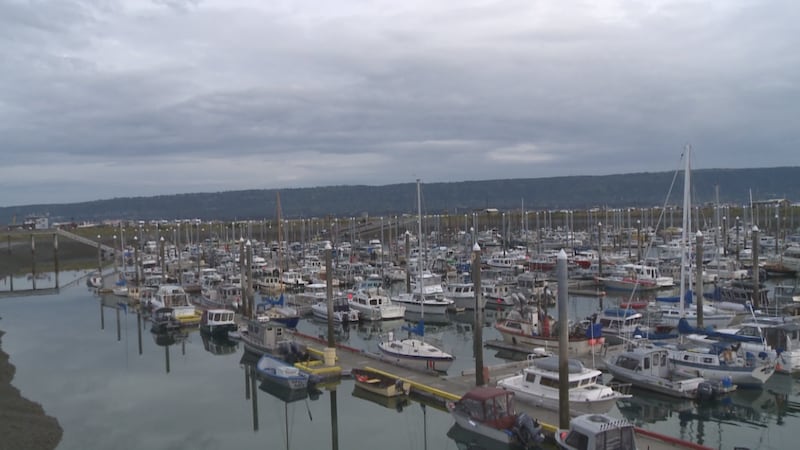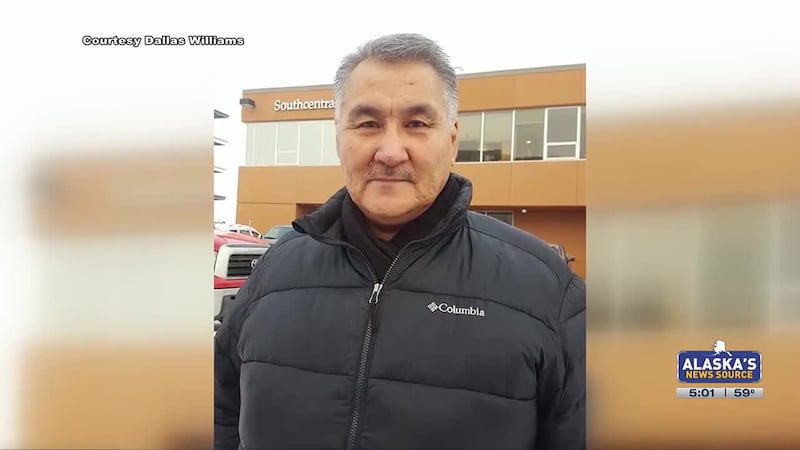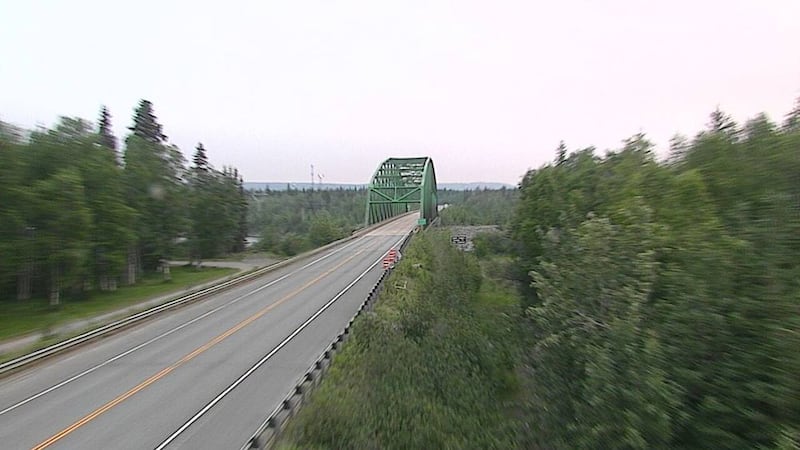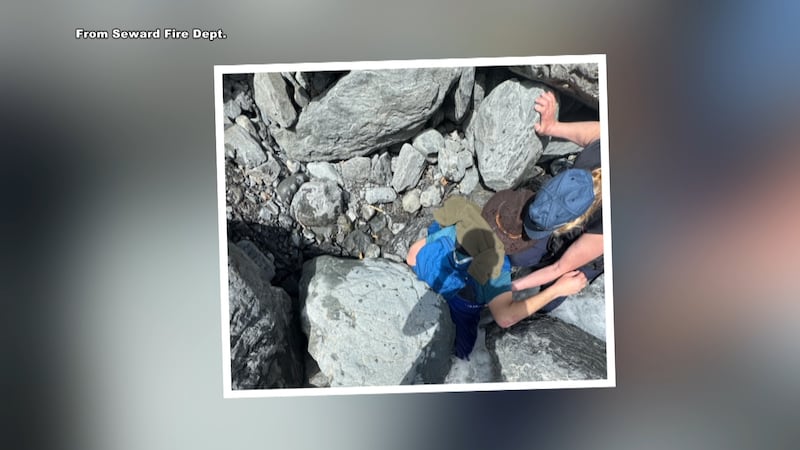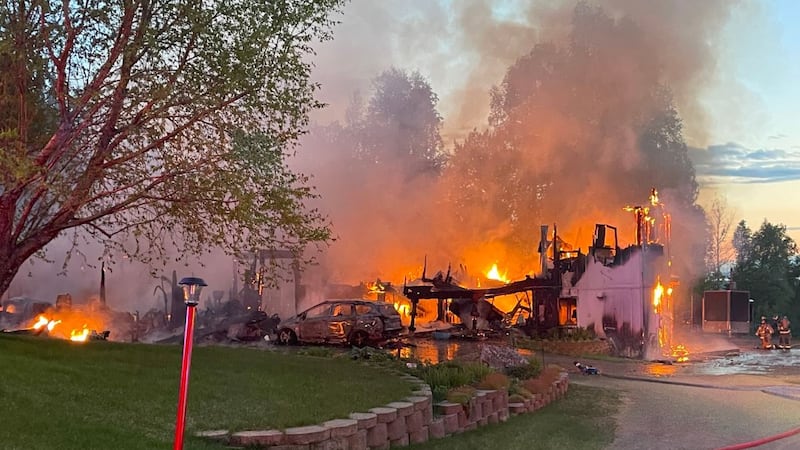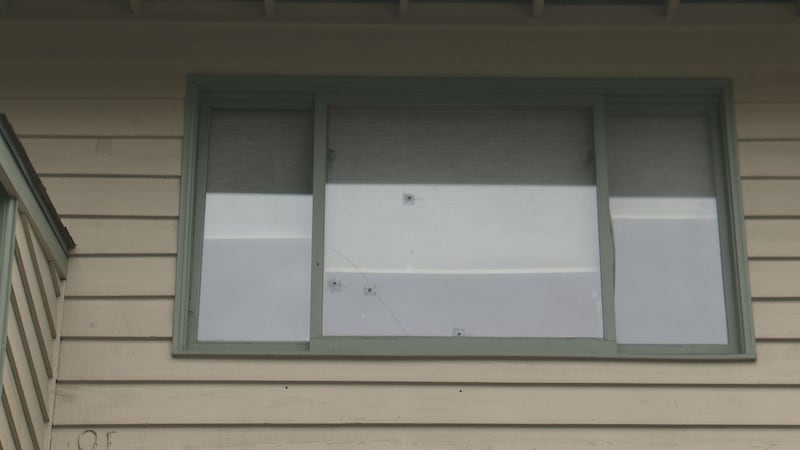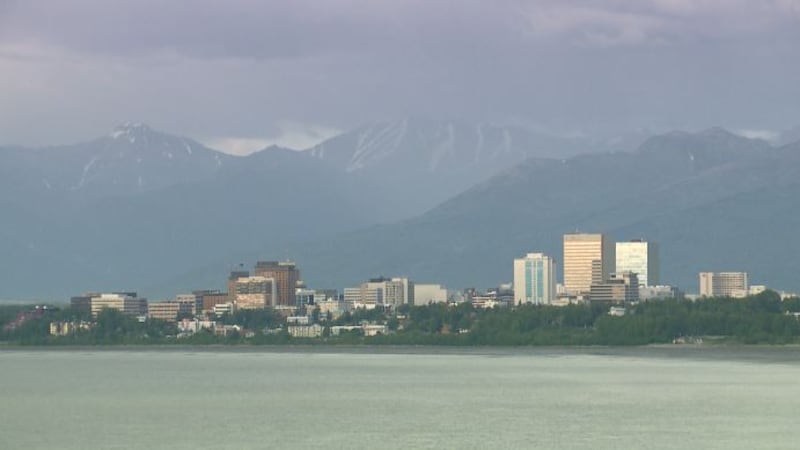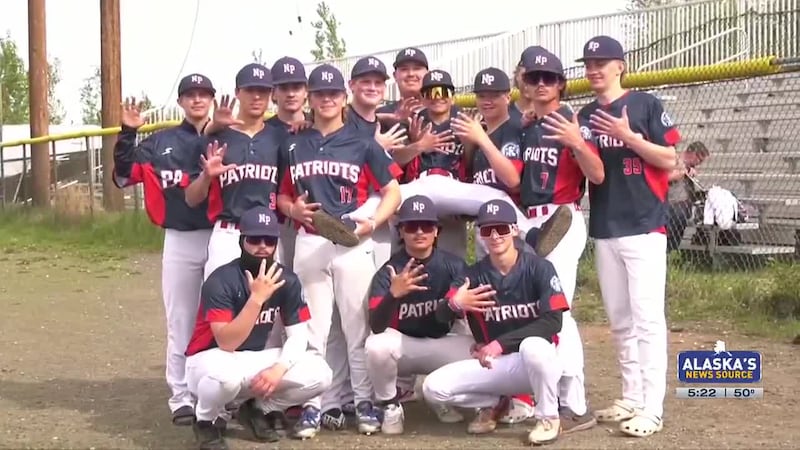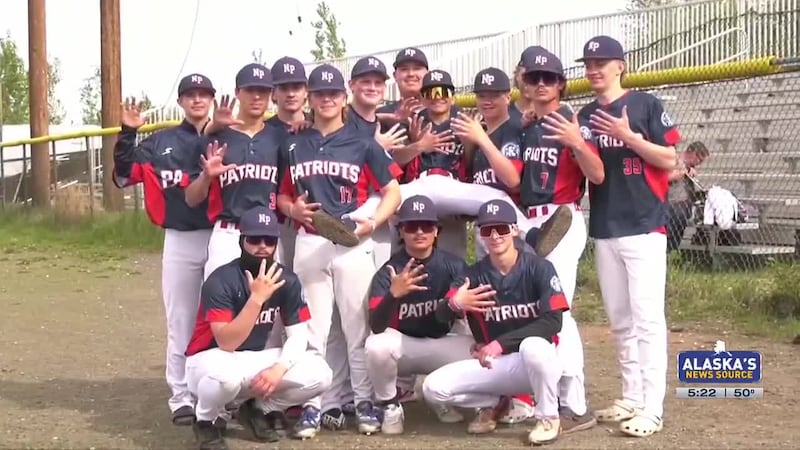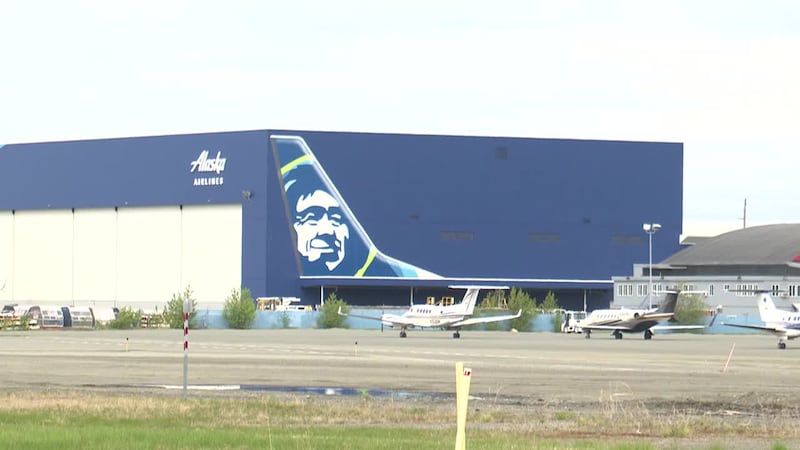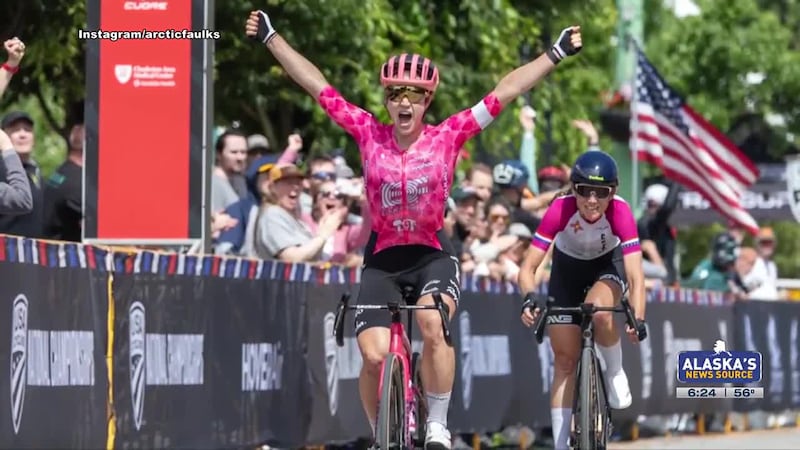Iditarod Countdown: CEO discusses state of Iditarod, 100th anniversary of ‘serum run’
ANCHORAGE, Alaska (KTUU) - The Iditarod, Alaska’s most iconic sporting spectacle, is preparing for its 53rd running in March, which marks a monumental year for dog mushing in the state.
2025 will be the 100th anniversary of the serum run, when life-saving medicine was transported via dog sled relay across 674 miles of Alaska terrain to Nome.
The Iditarod, a 1,049-mile race, plans to recognize the heroic run at this year’s event.
That was when dog sledding was used for function, rather than entertainment. The Iditarod, the annual race from Anchorage to Nome since 1973, continues to navigate the ever-evolving sport, both economically and socially.
Alaska’s News Source sat down with Iditarod CEO Rob Urbach ahead of the 2025 race to discuss the 53rd running of the historic race and the state of the Iditarod as a whole.
Q: We’re about 90 days out, what is the Iditarod headquarters look like? What’s kind of going on behind the scenes as we’re counting down?
A: We’re in full-on race mode, it’s rapidly approaching. There’s a fair amount of early snow up on the trails, so we feel pretty good about that dynamic. We just finished the first tranche of registrations, so we’ve got 35 mushers in so far. What’s interesting about that is that almost half that field or rookies. There are 18 rookies signed up, 11 women. It feels a little wide open this year. We have returning champions and Ryan Redington, we have Mitch Seavey, who was a late entry. So those dog teams are getting fired up and you know it’s around the corner. So, that first Saturday in March is going to [be] rapidly approaching and that sort of symbolizes, I think ... the spring and the renewal and all the challenges that are to come for all the mushers and fans of the Iditarod.
Q: 35 mushers, and with that number, about half of them are rookies. What does that say about where the sport is and where the race is? What does that tell you?
A: Well it’s [a] really great projection that we have a lot of young up-and-comings. By the time you think about doing the Iditarod and actually make the start line, it could be years because it’s that hard to get there. You have to qualify through races, typically they’re serving an apprentice in another kennel and just learning the sport, it’s a complicated dynamic and a big endeavor, so there’s a long kind of pathway and I think we’re sort of coming into hearing about more and more aspirational mushers. We had a lot of mushers that kind of all timed out around the same time in retirement, but our crop of young up-and-coming mushers is robust and that bodes well for the future.
Q: 35 mushers, is that a comfortable number? Is that a concerning number?
A: Yeah, it’s a little bit of a lower number. We may see a few more entries before the start. It’s it’s a little bit on the low side. I think we’re hearing more and more about the investments that’s needed. It’s just a challenging dynamic. We’re suffering through some years of inflation and cost. But, I think we’re going to navigate through that. We feel really strongly about the symbolism for this year being the 100th-year anniversary of the famous serum run of 1925, where — famously — 300,000 vials of diphtheria serum was rushed to Nome. Only way to get there was by mushing and the sled dog, to save the others and kids that were in a very, very difficult situation. So, I think we’ll have a lot of news and a lot of media around that this year that will inspire more and more. We’re an old school, as authentic as you can be, but we’re always trying to be as innovative as we can and provide an immersive experience for our fans.
Q: 100 years coming up for that run, so how is Iditarod going to celebrate that and how is it connected to the race historically?
A: We have a lot of content that we’re pushing out. We did run as a pretty strong educational program, a strong reading program called IditaRead. So, the curriculum this year and the content is all about the serum run. There’s a couple of films that were made that we will be showing race week. There’s a documentary and a movie being made about the serum run. There is an initiative to take the actual Leonhard Seppala home, which is being rebuilt and put on display at the finish line in Nome. We’re very proud of what we’re developing with a new arch new famous burled finishers arch. The last arch lasted 25 years. Ramey Smith, who’s a 27-time finisher, his mother Lolly Medley, there’s a Lolly Medley Award, father Bud Smith, he’s an expert logman, so he’s crafting a beautiful brand new burled arch that will unveil in honor of the Iditarod finishers, of which there are only 834 humans, and in honor of the heroic mushers that mushed this serum to Nome 100 years ago. So, along [those] lines, we have a little medallion that is a replica medallion, this is what the mushers were awarded with for making that contribution of saving all those lives.
Q: That run was the ultimate showcase of what the sled dogs can do and the power of them. So does Iditarod want to identify? A sport, a competition or more, keeping those traditions and history alive?
A: It’s [a] sort of fusion of all those attributes, but for this, it’s really about the culture, because what dog sledding enabled Alaskans to, not just thrive, but survive. This was back when aviation was just starting, you couldn’t fly a plane from Anchorage in the winter in 1925 to Nome. There was only a couple of planes in the whole state at that time, and they were mothballed for the winter. So back then, at least, this is how they would have the trap lines, how the mail was delivered, how the medicine, the doctor or the healer came around. Every village had dog teams and this allowed commerce to take place and ultimately how the gold got out there in the gold rush and other goods and services. So it’s really this year, from the serum run itself, it is about honoring the importance of flat dog to really the settling and the prosperity and the growth of Alaska.
Q: You mentioned earlier also being innovative as well and having to adapt. So how is Iditarod continuing to overcome financial losses from loss of sponsorships?
A: We’re always having new programming. We have our insider subscription channel, we think it’s we did a really great job about bringing the experience. We have multiple live cameras running simultaneously, which is a pretty innovative. We published a pretty good leaderboard with all the analytics. It gets addicting. People are staying up and having vacation, staying up all night to watch our live stream, which is running 24 hours a day and we’re flying a lot more drones, ultimately deploying more AI as everybody is in the space. We have a lotto, we have various gaming initiatives, imagine an Iditarod game we have to solve puzzles to find your way to Nome. So, we’re developing a gaming initiative as well on top of already all the other programs.
Q: And that’s something the Iditarod will always be focused on, trying to raise funds. Will there ever be a format or a way for the Iditarod to be more financially feasible?
A: I think we’ll always keep the 1,000ish miles, it is a pretty sacred number. There are initiatives to do some shorter racing to support the mushing community, but we’re trying to be really innovative. We have an “IditaHealth” initiative that’s attracting new sponsorship. That’s the leveraging [of] our credibility, our goodwill to drive positive health transformations. We have that opportunity that creates opportunity for sponsors to get attached to something beyond just the race itself. So we’re optimistic that will generate some additional incremental revenue streams.
Q: Unfortunately, the passing of Dr. Stuart Nelson, the chief veterinarian, just how much of an impact did he have and how much of a loss that? Will there be an appointing of a new chief vet?
A: Dr. Nelson was a 38-year contributor to the Iditarod. His mission in life was exemplary dog care. He will be missed terribly, we do miss him. We have developed [a] new kind of co-chief veterinarians for 2025. Longtime race veterinarians, Erica Friedrich and Greg Closter will be handling those duties. So we divided his duties across a couple of different people. He’ll be sorely missed, but we have a great template and we really are grateful to all the contributions that Dr. Nelson made to us.
Q:. A lot of people help him make this race happen, from the vets to the volunteers and the rural communities as well. Are there any initiatives or how Iditarod wants to stay involved in the rural communities?
A: A lot of that’s through programming into the rural communities educational systems. We typically have our teacher on the trail program, so the teacher is going out to every school in the rural communities. We leveraged our IditaHealth relationship into the rural communities as well to understand what’s important. The mushers are really inspirational, they have a lot of cultural relevancy. There’s a lot of social programs that are in rural communities that maybe get tuned out a little bit and I think we pack a very relevant cultural punch to put forth making smart choices around lifestyle, around nutrition, around school. A lot of our mushers will pay visits into those communities. We’ve launched some health fairs, so we continue to program and engage those communities and provide them access even to our insider coverage inside their school systems.
Q: Do we expect to see certain any other mushers sign up before the race? Or a certain six-time champion Dallas Seavey?
A: We never know. We probably will see a late entry or two at this point. There’s been an issue in Bethel because even there’s been a lot of snow on the actual Iditarod trail, Bethel has not a lot of snow. There’s a couple of folks in Bethel that haven’t had the training and they’re really concerned if they don’t get snow — they just missed eight or nine days of training because the lack of snow — so that’s a big challenge for that. The Iditarod is always hard to predict, we’re talking about of course Dallas and if Dallas in the race he’s the odds-on favorite, but without a Dallas, you have a wide-open race. Mitch [Seavey], knowing Mitch, will be competitive, he’s got all the experience, he’s a winner, he’s going to have a great dog team. Jessie Holmes has been a frontrunner for years. Obviously Ryan [Redington] is a ... champion. You’ve opened up to you people like Travis Beals, Mille Porsild I mean, there’s always going to be someone you know, someone like Nic [Petit], who’s been a front-runner for years. Depends on what the storms and the weather and all the strategy, decisions on rest and run, and go, and how and where you camp, where you stop. And the mushers basically say that all their plans typically go by the wayside after one day, right? So you know, we’ve got some rookies that are that are pretty impressive as well and there may be some surprises.
Q: And we expect the ceremonial start to be in downtown Anchorage once again?
A: Absolutely. Hard to forget the date this year, March 1. We’re already ready to roll and put on a great show.
See a spelling or grammar error? Report it to web@ktuu.com
Copyright 2024 KTUU. All rights reserved.
